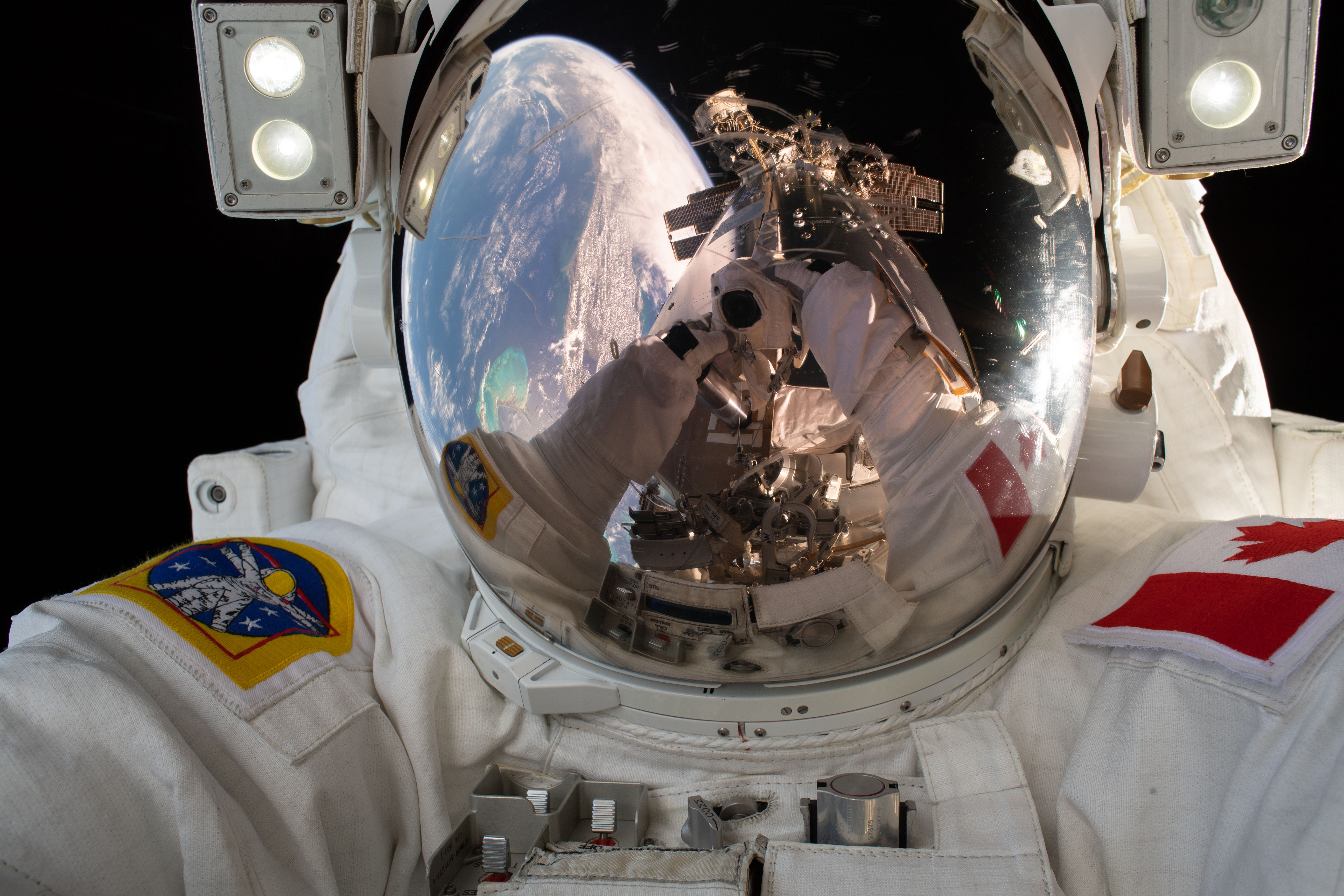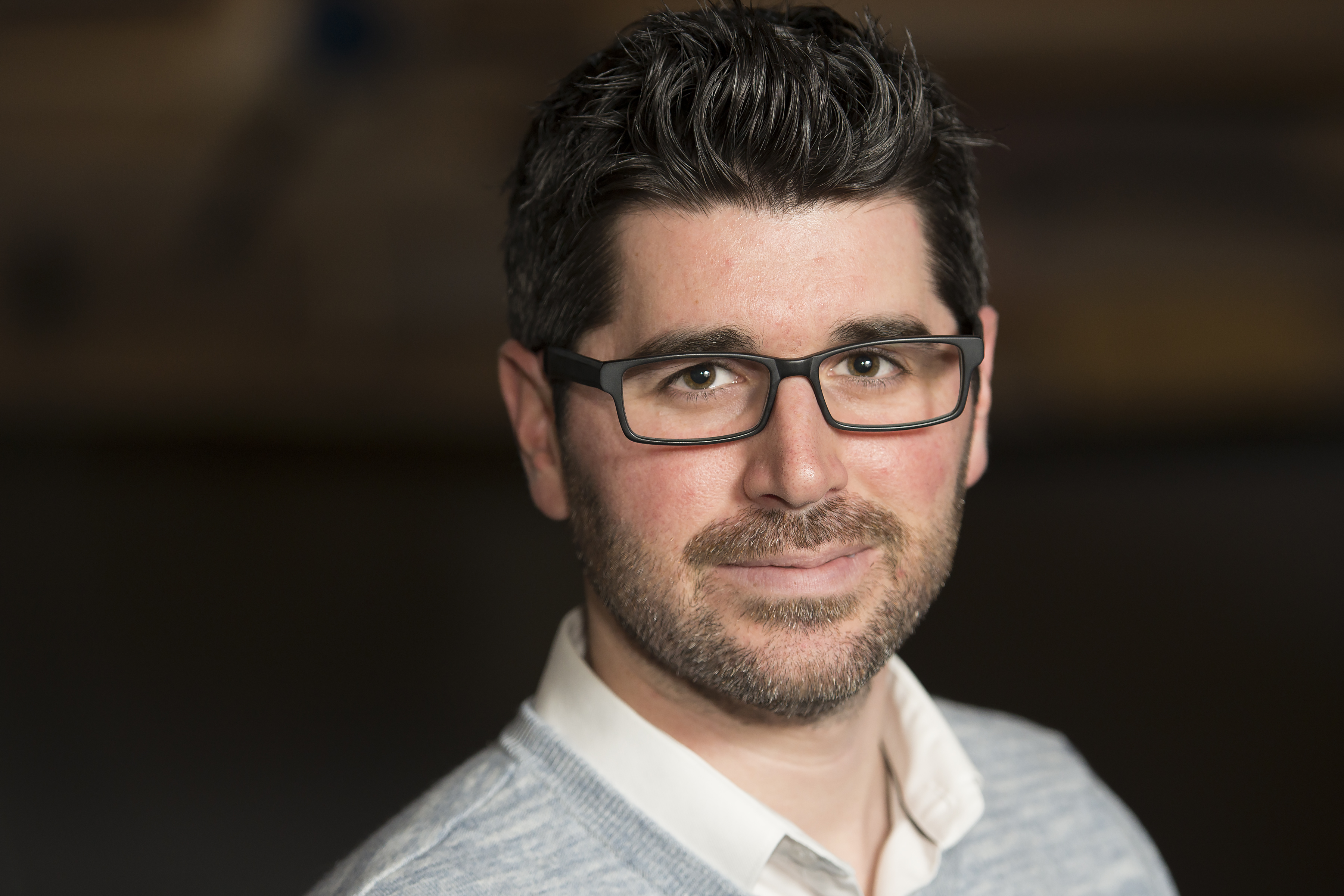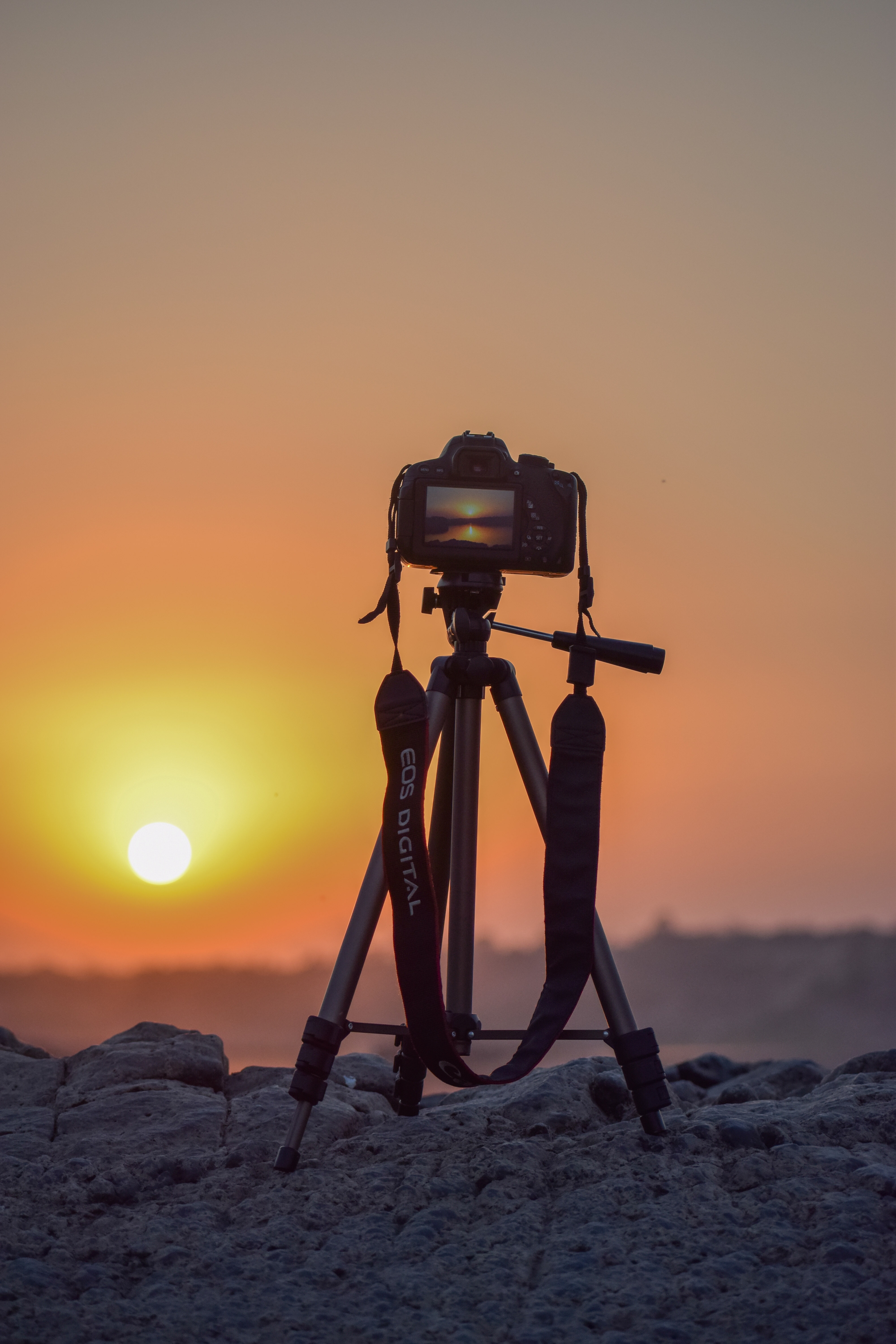
iss059e016574 - Expedition 59 Flight Engineer David Saint-Jacques of the Canadian Space Agency takes a quick self portrait while working outside the International Space Station. (Credit: NASA)
Millions of people are taking pictures everyday with an ease unprecedented even 20 years ago. One of the biggest reasons why this is so easy now is because space scientists invested in charge-coupled device (CCD) technology decades ago.
Back in 1969, two engineers at Bell Labs, Willard Boyle and George Smith, created the CCD (and won a Nobel Prize for their work in 2009). Originally they were looking for ways to store and read-off data in better and faster ways. However, they and many others immediately recognized CCDs would be incredibly useful for imaging as well. Up until that point, all cameras used film: light-sensitive material that, when exposed to light, would create a chemical reaction, leaving an image of the light behind. The best telescopes on the planet used large photographic plates to record images.

Dr. Jesse Rogerson
Dr. Jesse Rogerson is an astrophysicist and Science Advisor at the Canada Aviation and Space Museum. He received is Ph.D. from York University where he studied super massive black holes. Jesse also has dedicated much of his professional career to education and public outreach by working at various museums, science centres, and the York University Astronomical Observatory.
CCDs meant the strength of light could be stored electronically and then read-off into a digital picture. For astronomy this meant no more changing photographic plates for each image of the sky you wanted to take!
Around this time, the astronomical community had already begun planning a large space observatory that would eventually become the Hubble Space Telescope. Starlight that travels through Earth’s atmosphere is distorted by the turbulence of the air. Observing through our atmosphere is like trying to see a penny on the bottom of a pool. Even if the pool water is very still, the penny will still be somewhat distorted. By putting a telescope in space, you are above the atmosphere, and thus the starlight is not distorted.
But, if your telescope is in space and it uses photometric plates to record images, how do you retrieve the images? And how do you put new plates in the telescope? Astronomers toyed with various answers to these questions including sending astronauts up to retrieve the photometric plates and insert new ones.
CCDs solved this problem because images could be saved on hard drives, and beamed back to Earth via RADAR. Unfortunately, CCDs were very new and not ready to be used for high-end science. So universities, labs, and private companies around the world started investing millions in CCD development. As a result of this early investment, CCDs are now in every telescope, every DSLR, and many mobile phones.
This is how investments in fundamental scientific research can have incredible impacts on our everyday lives and just one of the reasons why Space Matters.



